Buzz into learning with these engaging bee activities for EYFS! Bees are a fascinating theme to help children explore nature, teamwork, and the importance of caring for the environment.
These activities will support children’s development toward the Early Learning Goals and across all EYFS Areas of Learning and Development while sparking curiosity and creativity.
Blossom’s Recommended Bee Activities for Early Years:
Activity 1: Make a Bee Craft
Provide yellow and black paper, googly eyes, glue, and pipe cleaners to create adorable bee crafts. Children can design their own bees and add stripes, wings, and antennae.
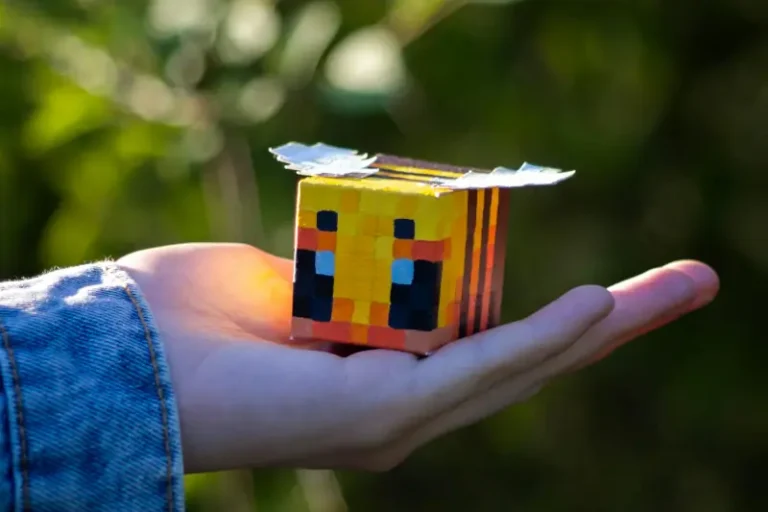
Materials such as toilet paper tubes, paint or tissue paper are great for crafting too. Children can use yellow and black paint or tissue paper to turn the tube into their own bee!
EYFS Areas of Learning and Development and Early Learning Goals:
- Expressive Arts and Design
- Creating with Materials:
- Crafting bees encourages creativity and artistic exploration.
- Being Imaginative and Expressive:
- Personalising their bees inspires self-expression.
- Creating with Materials:
- Physical Development
- Fine Motor Skills:
- Cutting, gluing, and assembling the bees strengthens hand-eye coordination.
- Fine Motor Skills:
Activity 2: Pollination Role Play
Set up a role-play area or tray with pretend flowers and a bucket of yellow pom-poms as “pollen.” Children can act as bees, flying from flower to flower, collecting pollen, and transferring it to the hive.
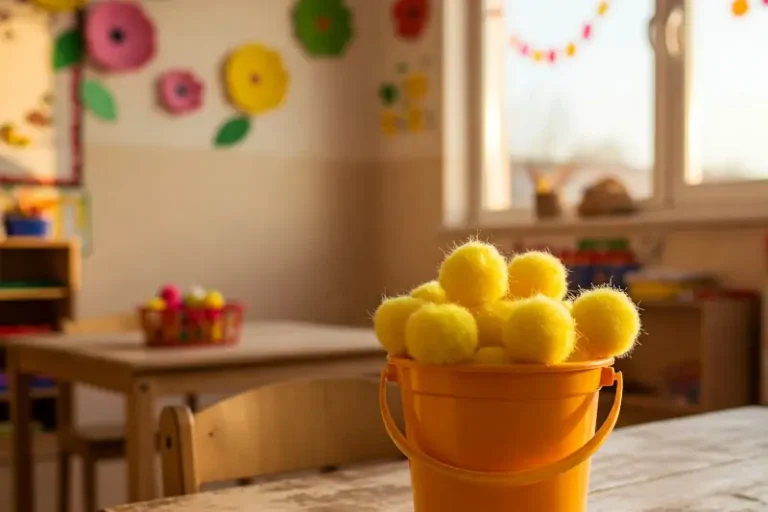
EYFS Areas of Learning and Development and Early Learning Goals:
- Understanding the World
- The Natural World:
- Children learn about the pollination process and the role of bees.
- The Natural World:
- Physical Development
- Gross Motor Skills:
- Flying around and reaching for flowers develops coordination.
- Fine Motor Skills:
- Picking up pom-poms develops hand strength.
- Gross Motor Skills:
- Communication and Language
- Speaking:
- Talking about their role as a bee builds vocabulary and understanding.
- Speaking:
Activity 3: Bee-Themed Sensory Play
Create a sensory tray with black and yellow rice, toy bees, flowers, and small jars or containers for “honey.” Let children explore scooping, pouring, and arranging the materials.
EYFS Areas of Learning and Development and Early Learning Goals:
- Understanding the World
- The Natural World:
- Children learn about the concept of bees and flowers.
- Sensory play encourages children to explore different textures.
- The Natural World:
- Physical Development
- Fine Motor Skills:
- Scooping and pouring materials strengthens hand muscles.
- Fine Motor Skills:
- Expressive Arts and Design
- Being Imaginative and Expressive:
- Creating bee-themed scenes sparks creativity.
- Being Imaginative and Expressive:
Activity 4: Bee Counting and Sorting Game
Provide cut-out flowers and bees with numbers on them and some small toy bees.
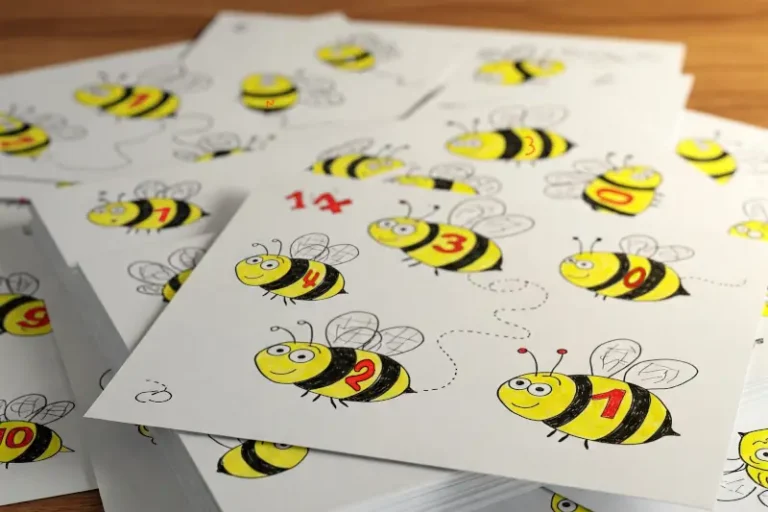
Ask children to match the number bees to the number flowers or they can use the toy bees to count how many should land on each flower.
EYFS Areas of Learning and Development and Early Learning Goals:
- Mathematics
- Number:
- Counting bees reinforces number recognition.
- Numerical Patterns:
- Matching bees by colour or number supports pattern recognition.
- Number:
- Physical Development
- Fine Motor Skills:
- Picking up and placing bees develops precision and coordination.
- Fine Motor Skills:
Activity 5: Bee Movement Game
Teach children about the waggle dance, the way bees communicate with each other. Play some music and encourage them to move like bees, buzzing and “dancing”. Provide yellow and black sensory scarves for the children to use.
For an added challenge, place some flower cut-outs on the floor and encourage the children to ‘fly’ at different paces between the flowers.
EYFS Areas of Learning and Development and Early Learning Goals:
- Physical Development
- Gross Motor Skills:
- Dancing and moving improve coordination and strength.
- Gross Motor Skills:
- Communication and Language
- Listening, Attention and Understanding:
- Following instructions during the dance builds focus.
- Listening, Attention and Understanding:
- Expressive Arts and Design
- Being Imaginative and Expressive:
- Pretending to be bees inspires creativity and fun.
- Being Imaginative and Expressive:
Activity 6: Read a Bee-Themed Book
Choose books like The Very Greedy Bee by Steve Smallman or Bee: Nature’s Tiny Miracle by Britta Teckentrup. Read the story and discuss the importance of bees in nature.
EYFS Areas of Learning and Development and Early Learning Goals:
- Literacy
- Comprehension:
- Discussing the story enhances understanding and sequencing skills.
- Comprehension:
- Communication and Language
- Listening, Attention and Understanding:
- Listening to the story develops focus.
- Speaking:
- Talking about bees builds vocabulary and comprehension.
- Listening, Attention and Understanding:
- Understanding the World
- People, Culture and Communities:
- Discussing bees’ role in our ecosystem fosters environmental awareness.
- People, Culture and Communities:
Activity 7: Honeycomb Printing
Provide bubble wrap, yellow paint, and paper for children to create honeycomb prints. Let them press the bubble wrap into the paint and stamp it onto the paper to make bee-inspired patterns.
EYFS Areas of Learning and Development and Early Learning Goals:
- Expressive Arts and Design
- Creating with Materials:
- Printing with bubble wrap inspires creativity and exploration.
- Being Imaginative and Expressive:
- Children experiment with patterns and textures.
- Creating with Materials:
- Physical Development
- Fine Motor Skills:
- Pressing and stamping develops hand strength and coordination.
- Fine Motor Skills:
Activity 8: Plant Bee-Friendly Flowers
Take the children outside to plant flowers like lavender or wildflowers that attract bees. Talk about why flowers are important for bees and how they help pollination.
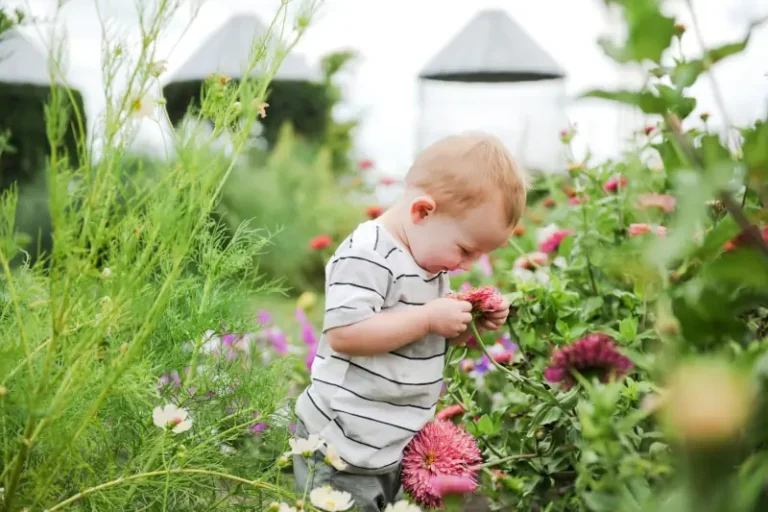
EYFS Areas of Learning and Development and Early Learning Goals:
- Understanding the World
- The Natural World:
- Planting teaches children about the relationship between bees and flowers.
- The Natural World:
- Physical Development
- Fine Motor Skills:
- Digging, planting, and watering enhance hand coordination.
- Fine Motor Skills:
- Personal, Social and Emotional Development
- Managing Self:
- Caring for plants teaches responsibility and patience.
- Managing Self:
Activity 9: Make Honey Sandwiches
Provide bread, butter, and honey for children to make their own honey sandwiches (with supervision).
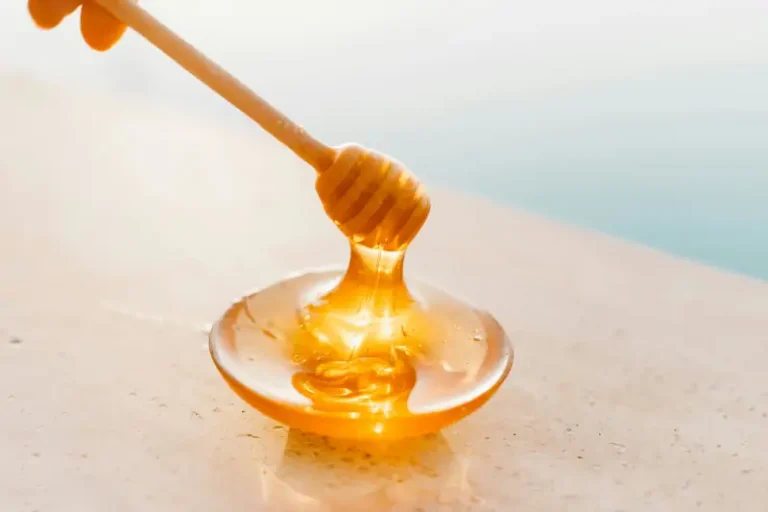
They can spread the honey and taste this delicious bee product while learning about its origin.
EYFS Areas of Learning and Development and Early Learning Goals:
- Physical Development
- Fine Motor Skills:
- Spreading butter and honey builds hand strength and coordination.
- Fine Motor Skills:
- Understanding the World
- The Natural World:
- Discussing where honey comes from introduces children to bees’ work.
- The Natural World:
- Communication and Language
- Speaking:
- Talking about the taste and process of making honey builds vocabulary.
- Speaking:
For UK nurseries and early years providers, these activities are perfect for inspiring environmental awareness and creativity in young learners. Let the buzzy adventures bee-gin!